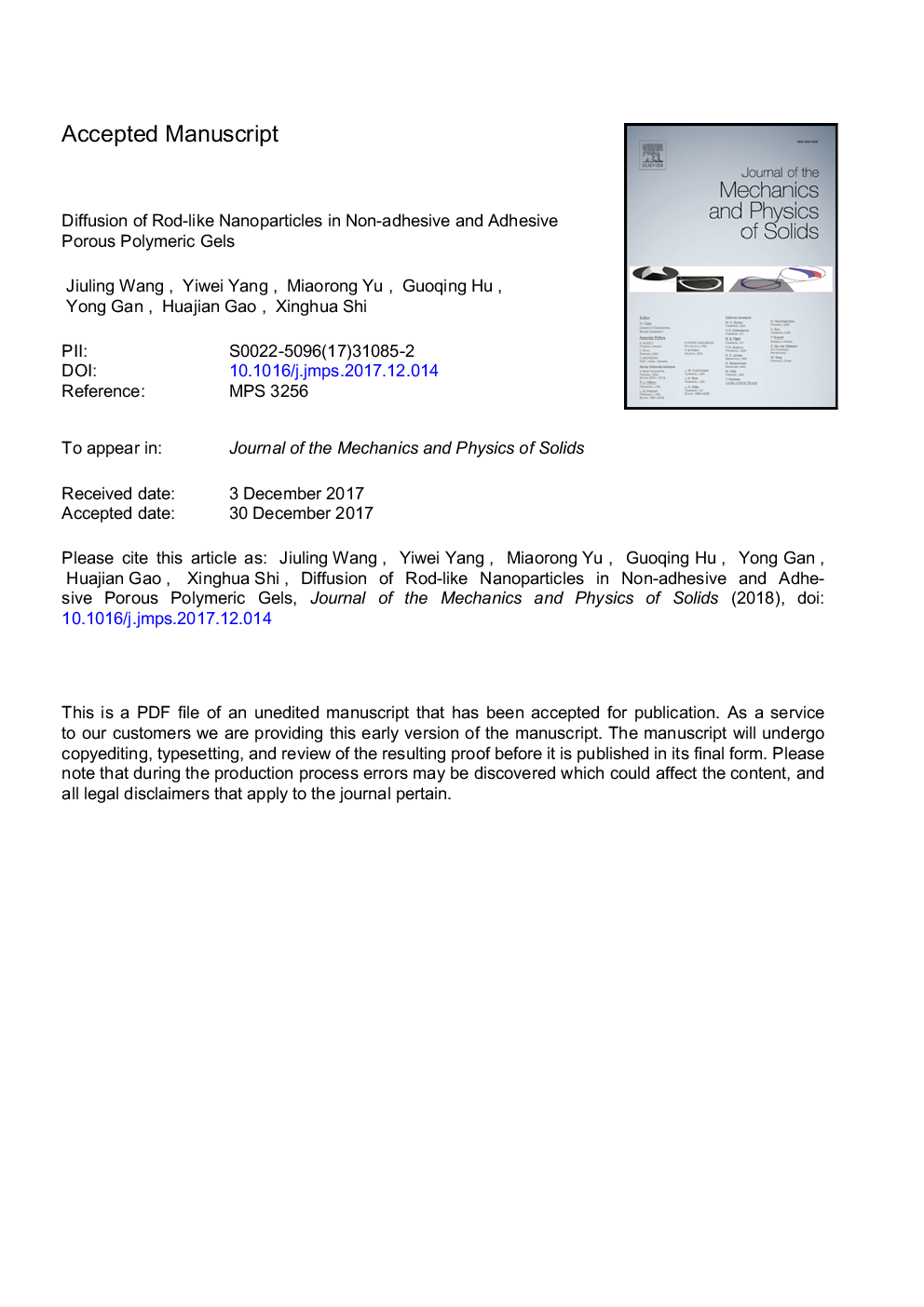| Article ID | Journal | Published Year | Pages | File Type |
|---|---|---|---|---|
| 7177525 | Journal of the Mechanics and Physics of Solids | 2018 | 48 Pages |
Abstract
It is known that rod-like nanoparticles (NPs) can achieve higher diffusivity than their spherical counterparts in biological porous media such as mucus and tumor interstitial matrix, but the underlying mechanisms still remain elusive. Here, we present a joint experimental and theoretical study to show that the aspect ratio (AR) of NPs and their adhesive interactions with the host medium play key roles in such anomalous diffusion behaviors of nanorods. In an adhesive polymer solution/gel (e.g., mucus), hopping diffusion enables nanorods to achieve higher diffusivity than spherical NPs with diameters equal to the minor axis of the rods, and there exists an optimal AR that leads to maximum diffusivity. In contrast, the diffusivity of nanorods decreases monotonically with increasing AR in a non-adhesive polymer solution/gel (e.g., hydroxyethyl cellulose, HEC). Our theoretical model, which captures all the experimental observations, generalizes the so-called obstruction-scaling model by incorporating the effects of the NPs/matrix interaction via the mean first passage time (MFPT) theory. This work reveals the physical origin of the anomalous diffusion behaviors of rod-like NPs in biological gels and may provide guidelines for a range of applications that involve NPs diffusion in complex porous media.
Related Topics
Physical Sciences and Engineering
Engineering
Mechanical Engineering
Authors
Wang Jiuling, Yang Yiwei, Yu Miaorong, Hu Guoqing, Gan Yong, Huajian Gao, Shi Xinghua,
